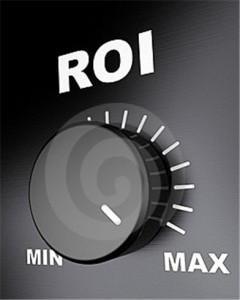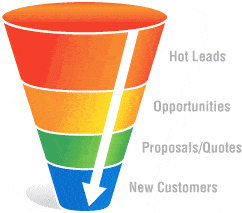How Marketing Automation Strengthens B2B Relationships
 Marketing automation strengthens B2B relationships. Savvy purchasers are spending more time researching their buying decisions online and it is resulting in higher expectations of online businesses. They are now craving more personal attention from the fast-paced, highly-technical commercial business world. B2B buyers want to feel like they are valued customers again. They want the same customized service from their online vendors as they are accustom to from their local suppliers.
Marketing automation strengthens B2B relationships. Savvy purchasers are spending more time researching their buying decisions online and it is resulting in higher expectations of online businesses. They are now craving more personal attention from the fast-paced, highly-technical commercial business world. B2B buyers want to feel like they are valued customers again. They want the same customized service from their online vendors as they are accustom to from their local suppliers.
Offers Value before the Sale
Marketing automation strengthens B2B relationship by offering advice and guidance prior to the sale. It shows the B2B buyer that the company cares enough to offer them advice without expecting anything in return. Let’s compare this method using a traditional office furniture store. Prior to the internet, a salesperson would book an appointment with a buyer to go over their catalog and pricing. During this meeting, they would offer their advice and expertise on what type of furniture would best suit the space.
When a customer is browsing office furniture online, they may not know exactly what they need. They know what appeals to them, but unless they have some interior design experience, it will be difficult to figure out which pieces of furniture will work best in their given space. If the website for the furniture store offers the perspective customer design tips and helpful articles that explain how to choose the ideal layout, it will provide the buyer with additional value.
Offer Personalized Content that is Helpful to the Lead
In marketing automation, this is referred to as lead nurturing content. It is not meant to be a sales pitch or ad copy. Its main goal is to brand a business as an expert and develop trust with a buyer. This relevant and informative content can be further personalized based on the lead’s online behavior. The possibilities for customized content increases dramatically when a lead is profiled and scored using marketing automation.
Gain Greater Insight into Each Lead
Lead scoring provides deeper insight into buyer’s behavior and demographic characteristics. It assesses and ranks each lead compared to a typical consumer. By tracking which pages a lead visits, which tutorials a lead downloads, and how frequently a lead visits a site, marketing can determine their likelihood of conversion. When past purchasing history and demographics are added into the mix, lead scoring can provide a clearly defined profile containing all of the lead’s vital details.
Group Leads Based on Similar Needs
Once leads have been profiled and scored, they can be segmented into similar groups for a more customized approach. It will most likely be too difficult to cater to every leads concerns individually. Leads that share the same needs are grouped together and nurtured by providing information that is more relevant to their online activity and demographic profile.
Marketing automation provides a deeper insight into each lead and their unique needs. This insight can be used in countless ways to strengthen the connection between supplier and buyer. By using marketing automation to strengthen B2B relationships prior to a sale, a business can brand themselves as an expert and develop trust with future clients that will last well beyond the initial sale.









